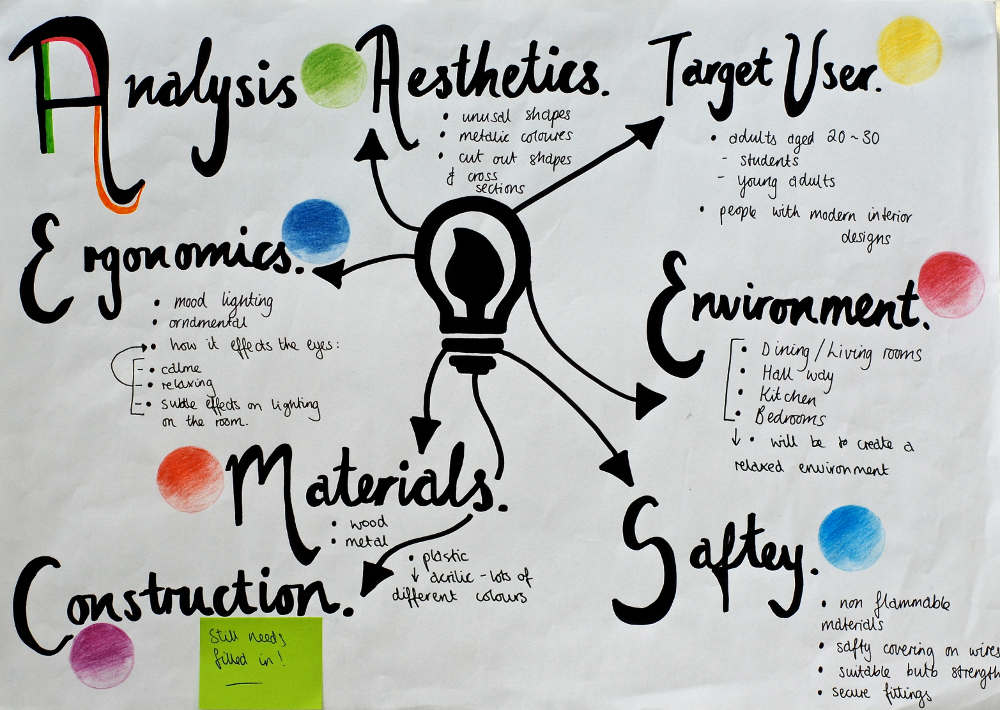[Photograph by Jordanhill School D&T Dept under Creative Commons]
Millions of women in India suffer from life-threatening diseases due to iodine deficiency. While medical supplements are available, they can't afford them. Grey Group's non-profit arm Grey for Good came up with the innovative idea of the life-saving Jeevan Bindi that works as an iodine patch that the women wear as bindis. This is a great example of the power of design thinking in transforming lives.
Design thinking has arguably never been so popular, fuelled by the work and impact of companies like Apple and innovation and design firm IDEO.
But what is design thinking? There is a fair amount of confusion about it, because design is widely perceived to be about aesthetics and appearance, and because there isn't a common definition of what design thinking is.
There are significant differences in the way noted practitioners of design thinking define and articulate what it is, because of the varied situations and diverse ways in which design thinking can be applied.
The definition by Tim Brown, CEO of IDEO, is practical and market oriented - he calls it a discipline that matches people's needs with what is technologically feasible and can be converted into customer value in a viable manner.
Dr Charles Burnette, the creator of IDESIGN, a design thinking course for children, describes it more abstractly as a process of creative and critical thinking that enables ideas to be organized, decisions to be made, situations to be improved and knowledge to be gained.
I agree with authors Jeanne Liedtka and Tim Ogilvie that design thinking is actually a systematic approach to problem solving that starts with customers and has the ability to create a better future for them.
Design thinking is actually a systematic approach to problem solving that starts with customers
Design thinking, therefore, is not about appearance and aesthetics, it is a holistic thinking process, a discipline that can be applied to any problem, situation, experience, system or environment and whose impact is potentially profound.
I have long been an evangelist of the first principle behind design thinking - that of empathy for the customers and end-users of a product, service, solution or experience. Gaining insight about your customers' behaviour and aspirations, their needs and pain-points, their culture and context, is critical and essential to stay relevant in creating and delivering value.
There are three key stages to design thinking: starting with empathy for the end-user and framing of the issue or problem, followed by ideation of possible solutions where the emphasis is to go beyond the obvious, and the final stage of prototyping these solutions with end-users and iterating to the viable one that wows.
At the heart of design thinking is the unique way it combines the rigour and discipline of analytical thinking with the art of intuitive thinking in solving problems. Or in the words of Harvard professor Linda Hill, the way it combines the scientific method and artistic process.
It combines the rigour and discipline of analytical thinking with the art of intuitive thinking in solving problems
So how do we go about practising design thinking? Are there specific steps? Yes, there are.
Stanford d.school has five stages: empathise, define, ideate, prototype and test. Within these, problems can be framed, the right questions can be asked, more ideas can be created, and the best answers can be chosen. The stages aren't linear, they can occur simultaneously and can be repeated.
Another version of the design thinking process has seven stages: define, research, ideate, prototype, choose, implement and learn.
Jeanne Liedtka and Tim Ogilvie detail four stages: the 'what is' stage that explores current reality, the 'what if' one that envisions a new future, the 'what wows' stage in which you make some choices, and the 'what works' that takes the solution to the marketplace.
In all of this, as Tim Brown emphasizes, it is very important to ask the right question - in defining the brief, in framing the issue or problem.
Design thinking has had a huge impact on technology companies, and particularly through smartphones and tablets its impact on people across the world has been far-reaching.
Catherine Courage, senior vice president of customer experience at software firm Citrix, was asked by McKinsey why she had chosen the design thinking approach to get closer to her company's customers. Her answer: "The main purpose of my team's charter is to ensure that we're delivering a great experience across all customer touch-points - from the website to trying our products, using them, and all the way through to support and renewal of contracts. This requires a company-wide focus on the customer. Design thinking is an ideal framework for us to use because it focuses on developing deep empathy for customers and creating solutions that will match their needs - as opposed to just dreaming up and delivering technology for technology’s sake."
It focuses on developing deep empathy for customers and creating solutions that will match their needs
John Maeda, design partner of venture capital firm Kleiner Perkins Caufield & Byers shares the growing impact of design and designers in his Design in Tech 2015 report:
- Facebook, Google, Accenture and Flextronics among others have all acquired design firms;
- 27 startups co-founded by designers have been acquired since 2010 by Google, Facebook, Adobe, LinkedIn, Dropbox, etc;
- Six venture capitalists in Silicon Valley have invited designers into their teams.
Design thinking can be applied to solve wicked problems - those that are complex and ambiguous, and are difficult to solve because of incomplete, contradictory and changing requirements that are often difficult to recognise. Such as climate change, affordable and effective healthcare for all, eradication of poverty and inequality.
We therefore need more design thinkers, and we need design thinking to be taught early and practised widely.
Your Toolkit
Books:
- Design Thinking for Growth: A design thinking toolkit for managers by Jeanne Liedtka & Tim Ogilvie
- Change by Design by Tim Brown
- Design Thinking for Entrepreneurs and Small Businesses by Beverly Rudkin Ingle
- Design Thinking: Integrating Innovation, Customer Experience and Brand Value edited by Thomas Lockwood
Articles and more:
- Applying Design Thinking to Your Business by Roger Martin
- Design Thinking by Tim Brown, CEO of IDEO
- Design in Tech 2015 by John Maeda, KPCB
- Applying design thinking across the business: An interview with Citrix’s Catherine Courage
Websites:
- There is a useful conversation on design, design thinking and business at
- A brief history of design thinking:
Videos and TED Talks:






